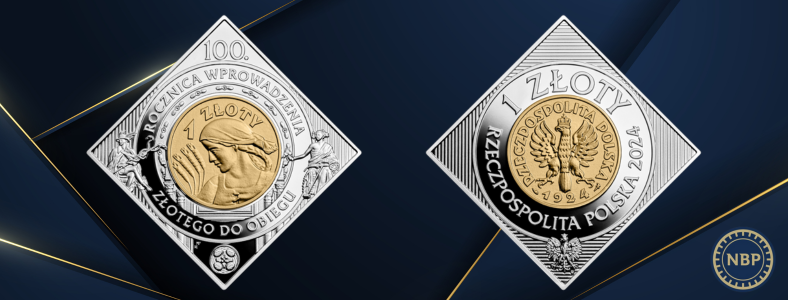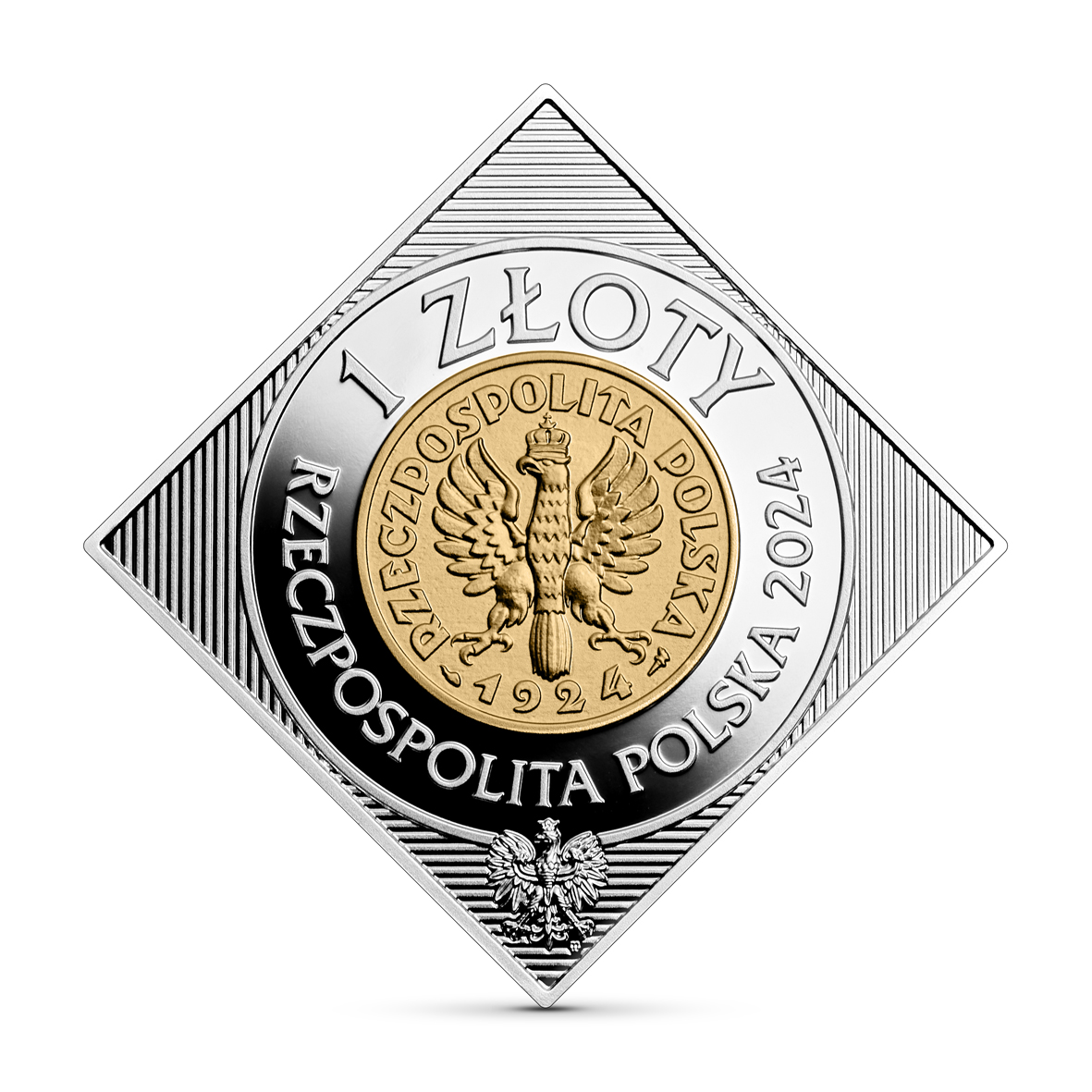
100th anniversary of the introduction of the Polish zloty into circulation. NBP has issued a special coin!
April 29, 2024 is the 100th anniversary of the introduction of the Polish zloty into circulation. On this occasion, the National Bank of Poland issued a unique coin with an image resembling the 1924 zloty.
The Polish zloty replaced the Polish mark on April 29, 1924.
The anniversary coin was introduced by the National Bank of Poland on April 25, 2024.
The coin with a face value of PLN 1 is made of Ag 999 silver (with selective gold plating), has the shape of a clip, dimensions 40 x 40 mm and weighs 28.28 g. Its mintage is up to 10,000 pieces and it will be available in all Branches. District NBP and in the Kolekcjoner online store for PLN 400.
The reverse of the coin shows the image of the reverse of a PLN 1 coin from 1924. The coin also features an image of a fragment of the portal above the entrance to the main hall of Bank Polski SA in Warsaw and graphic elements of a PLN 100 banknote from 1934: on the left side, an allegory of trade in the figure of Mercury with a caduceus, on the right - the personification of industry. On the obverse of the coin there is an image of the obverse of PLN 1 from 1924.


`
A bit of history
After regaining independence in November 1918, a decision was quickly made to establish a new bank of issue and introduce a new Polish currency - the zloty. However, the effort to rebuild the country and the need to fight for the borders prevented the quick implementation of changes. Additionally, almost from the very beginning of its existence, the reborn Polish state had to struggle with growing inflation, which in the second half of 1923 turned into hyperinflation. There was an economic crisis and the socio-political situation was very tense.
The zloty debuted in April 1924. Its value was carefully calculated. The new Polish currency was based on the parity of gold and convertible currencies. 1 zloty was equivalent to 9/31 g of gold, 100 zlotys was equivalent to one troy ounce, and 1 kg of the precious metal cost 3,444 zlotys.
In December 1923, the government of Władysław Grabski was established, and his cabinet was faced with the task of carrying out treasury and currency reforms.
The reform turned out to be a great success because it not only resulted in the improvement of public finances, but also constituted an impulse for the economic development of the country. It also resulted in a significant strengthening of Poland's position in the international arena.

All comments